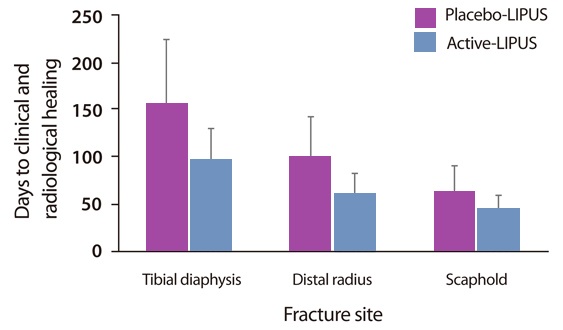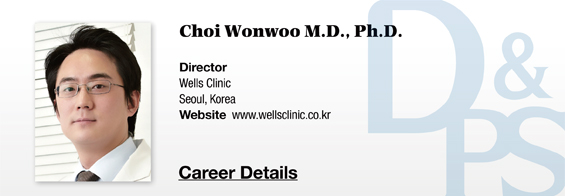▶ Previous Artlcle : #4-1. Ultrasound-Mediated Adjunct Therapy
The main differences here go beyond just the intensity level. To achieve tissue regeneration, LIPUS is administered for 20 minutes every day. It has been reported that this high frequency and long duration of treatment can effectively bring tissue regeneration with the intensity used in rehabilitation (Ebenbichler et al., 1998; Ebenbichler et al., 1999).
[Advertisement] MAGNUM(Q-switched Nd:YAG Laser) – Manufacturer: (www.i-dana.com)]
Recently, LIPUS is extensively used for bone regeneration in bone fracture and related scientific data are being published. Traditionally, ultrasound rehabilitation therapy was not carried out in bone fracture. Because there is a drastic difference in acoustic impedance between the bone and adjacent tissues and this causes exothermic reaction. Also, ultrasound can generate strong shear stress in the border and damage the bone and adjacent soft tissues. However, LIPUS causes little exothermic reaction of 1 .0℃ or less in the boundary area between the bone and soft tissues (Pilla et al., 1990; Ziskin et al., 1989), and rarely causes inertial cavitation and can therefore be safely used in treatment of fracture.
The following are summaries of three well-designed randomized controlled studies showing that LIPUS promotes tissue healing in acute damage from fracture (Heckman et al., 1994; Kristiansen et al., 1997; Mayr et al., 2000) (Figure 1.)

Figure 1. Clinical study showing LIPUS accelerates healing in acute fracture damage.
As shown here, in tibial fracture, the LIPUS group had a 38% shorter time to radiological and clinical recovery compared to the placebo group. The time to recovery was shortened by 38% in distal radius fracture and by 30% in scaphoid fracture. Based on these results, Smith and Nephew have released a commercial LIPUS device called Exogen 4000+ ™. Exogen 4000+ ™ earned FDA approval as a conservative treatment for simple diaphyseal tibial fracture and scaphoid fracture.
In particular, the clinical relevance of LIPUS is that it helps accelerate bone union in fracture patients with complications such as smoking, diabetes or osteoporosis that delay the healing process. Moreover, LIPUS has been shown to promote re-union in delayed union or incomplete union after fracture (Mayr et al., 2000; Rutten et al. 2007).
Lately, various studies are examining the integrin-mediated pathway as a molecular mechanism of LIPUS-induced tissue regeneration. It is yet unclear how the physical stimulation from LIPUS is recognized by cells, however, exposing fibroblast, osteoblast, chondrocyte, macrophage, and mesenchymal stem cell, etc. to LIPUS have been reported to always activate the integrin-mediated pathway. In 2002, Zhou et al. reported that exposing fibroblasts to LIPUS activated Rho and ROCK (Rhoassociated Coil-containing Protein Kinase) and promoted MEK-1 pathway activation leading to fibroblast proliferation and collagen synthesis. LIPUS activates integrin pathway to also increase nitric oxide production and bone synthesis by osteoblasts and phagocytosis of macrophages. Activation of these cells eventually stimulate to bone healing after fracture.
The low intensity ultrasound therapy is now expanding into the area of wound treatment. But applying the traditional method of delivering ultrasound to the trauma area of the skin may cause secondary infection or inflammation from friction (as the affected area is in contact with the lubricated ultrasound probe). In 2007, Ennis et al. used noncontact low frequency ultrasound therapy (LFUS) and found wound healing was accelerated. In their noncontact method of ultrasound delivery, the energy is delivered to the skin with microstream of sterilized water administered 1 cm from the wound surface in the frequency of 40kHz and intensity of 0.1~0.5W/cm².
Recent studies on LFUS in wound treatment are reporting positive results regarding its molecular mechanism and clinical efficacy.
-To be continued-
▶ Next Artlcle : #5-1. Sonophoresis





















